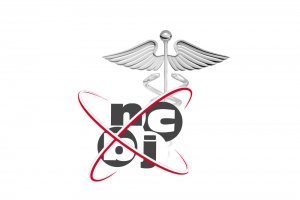Techimmuna will help to treat rheumatoid arthritis
12-02-2015
Techimmuna, a new product just introduced to the market by NCBJ POLATOM Radioisotope Centre, may be used to detect and precisely locate various cases of inflammation in patient’s body. In case of rheumatoid arthritis the product may also be used to evaluate how active the disease is, which is its particularly significant advantage.
"Techimmuna is a radiolabelled preparation. Molecules of human immunoglobuline G produced from plasma proteins have been modified so that they readily bind technetium-99m radioactive atoms. In patient’s body the preparation is preferably taken up at sites of increased inflammation. Gamma radiation emitted by decaying technetium-99m atoms makes possible to locate the places” – explains Professor Renata Mikołajczak, Proxy of NCBJ POLATOM Director, Scientific Matters – „The radiation detected by a medical scanner is computed into spatial distribution of the radioisotope, which enables physicians to locate the inflammation and to determine disease’s character. Precise medical diagnostics is an indispensable prerequisite for a fast and efficient treatment”.
Techimmuna is applied to the patient in a dedicated nuclear medicine clinic as a single injection done by some personnel experienced in application of radiopharmaceuticals. About 4 hours later the patient is scanned by a scintigraph; the scan gives a detailed image of inflammation sites in his/her body. Technetium-99m activity must be sufficiently high to produce diagnostically useful image, but on the other hand it also must not be too high if the patient is to be safe. Technetium-99m is used because it decays very quickly (within hours) and its decay products are easily removed from the patient’s body.
A challenging task for NCBJ POLATOM researchers was to modify molecules of human immunoglobuline G so that the protein/technetium-99m complex were stable inside patient’s body without loss of any biological properties of the protein. Such result has been achieved with the help of yet another smaller molecule capable to reliably bind technetium-99m; that intermediary molecule was attached to immunoglobuline. The modified molecules are prepared in the form of high-quality radiopharmaceutical preparation ready to be administered to the to-be-diagnosed patients in dedicated nuclear medicine clinics.
Rheumatoid arthritis is a chronic inflammatory joint disease; the disease may also attack internal body organs. Most frequently it is diagnosed between 30 and 50 years of age. Typically it starts inside a joint when an unknown factor stimulates the joint synovial membrane to an inflammatory reaction. Enlarging joint in effect damages surrounding structures, causing oedema and pain. Finally the attacked joint may become irreversibly immobilized. In extreme cases the illness can cause even death. So far no effective cure for rheumatoid arthritis exists, however early diagnosis and treatment may retard progress of the disease and prevent related complications. Rheumatoid arthritis incidence in developed countries is 1%, and women suffer the illness three times more frequently than men.
"NCBJ is currently the largest supplier of solutions for nuclear medicine in Poland and a significant player on the world markets. High market position of radiopharmaceuticals and accelerators manufactured in Świerk (confirmed by several prestigious awards awarded to our products) is an excellent example of how important applications our R&D works may find not only to save human life but also to develop national economy” – points out Professor Grzegorz Wrochna, NCBJ Dirfector General – "It would be impossible without a tight contact with pure research, appropriate infrastructure, and highly qualified staff”.





